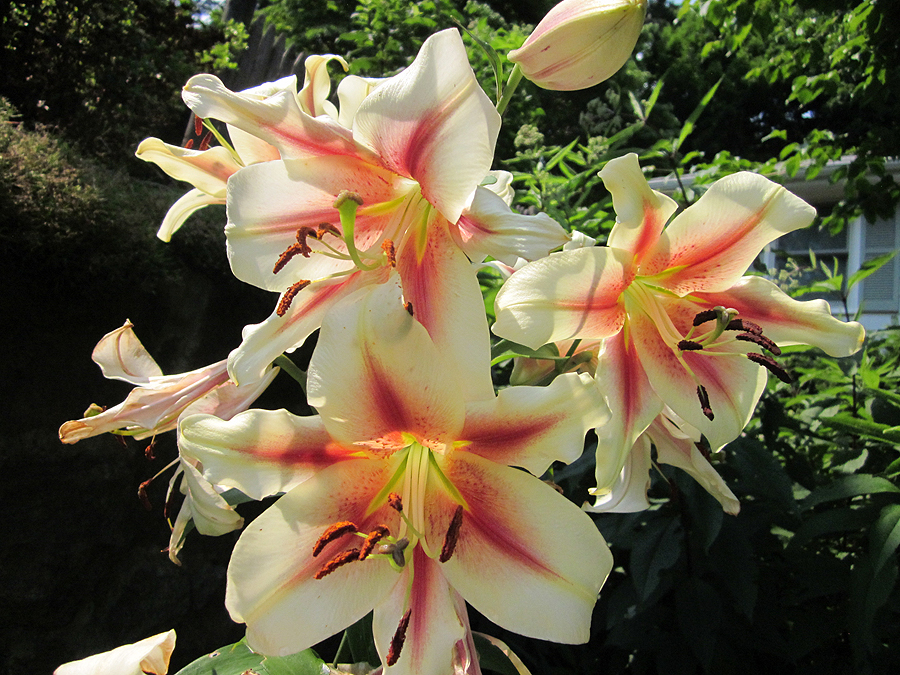
Lilies are part of the Lilium family and grow from bulbs, unlike daylilies, which grow from tuberous roots. Their six-petaled blooms last a long time, and they make excellent cut flowers.
A lily flower may form the shape of a trumpet, with a more-or-less elongated tube. Or the petals may curl under or spread out flat.
As with most bulbs, lilies only bloom once per year. They need a cool winter dormancy period of at least eight weeks in order to reinitiate the flowering cycle. Each plant blooms two to three weeks out of the year.
Once a stem has finished blooming, that’s it! Cutting off the spent flowers isn’t going to make way for any new buds. However, deadheading lilies is still a good idea for a couple of reasons. For one thing, it cleans up the appearance of the plant as a whole. And the plant will not develop any seeds.
However, whatever you do, do not remove any of the leaves, until they have died down and turned brown in the fall. Healthy green leaves should not be cut, because they are absorbing energy, which is critical for next season’s flowering. As with other bulbs, the foliage produces the energy needed for next year’s flowers. Once the stems are completely yellow (which may take until late fall), they can be cut back to the ground.
Lilies love full sun, and six hours or more a day is imperative. We are told that lilies like to have their “heads in the sun, and their feet in the shade.” To keep their roots cool, we should plant our lilies next to low-growing annuals, perennials, or decorative grasses.
According to the National Garden Bureau, many flowers have the word “lily” in their name but are not true lilies, which have six petals and six stamens with anthers. Lily plants can range from one foot tall up to seven feet tall.
And some lily bulbs are edible! Some are used as vegetables in China. They may be dried or used fresh from the ground.
So, what’s for dinner?

